Agroforestry and Agrivoltaics: Two Appropriate Technologies for Smart Shade on Farms
 Print This Post
Print This Post
By Katherine Favor
Extreme heat is making news headlines across the country as summer heats up. Farmers face significant challenges as they navigate heat and climate change, which can negatively affect crops, animals, and farm workers. We’re reprinting this informative blog that discusses using agroforestry and agrivoltaics to create smart shade on farms.
Farming is hard, period, but throw climate change into the mix and it gets even harder. Extreme heat from climate change can cause crops to shrivel, lose flavor complexity, become sunburned, and even die completely in some cases. In the case of perennial fruit crops, higher temperatures earlier in the year can also lead to premature bud-break, which leaves crops more vulnerable to weather events such as untimely rain, high winds, late frosts, and hail. To address these challenges, some farmers are turning to shade as a solution. Both agroforestry and agrivoltaics are practices that can provide smart shade to farms.

Shade from solar panels provides protection from sun and wind to vegetable crops below. Photo: NCAT
Agroforestry involves planting trees and shrubs within and around other crops, maximizing agricultural production while providing numerous ecosystem services. Agrivoltaics involves integrating solar panels with agricultural crops, allowing farmers to generate renewable energy while also earning a profit from crops below. While different in many ways, both of these practices offer some similar benefits to crops below, including providing shade, reducing water stress by conserving soil moisture, buffering extreme temperatures, and protecting crops from wind, rain, and hail. In addition to helping farms adapt to climate change, these two practices can also contribute to global efforts to mitigate climate change. In the case of agroforestry, trees sequester carbon dioxide from the atmosphere, while in the case of agrivoltaics, the use of solar panels reduces the need to burn fossil fuels, thereby reducing greenhouse gas emissions.
Both practices can provide economic benefits to grape growers, as well. By utilizing the vertical space in farms, both agroforestry and agrivoltaics can help farmers generate a higher profit per acre. In the case of agrivoltaics, the secondary “crop” would be energy, while in the case of agroforestry, the secondary crop would be fruit, nuts, timber, or carbon credits. There are indirect ways that agroforestry and agrivoltaics can help farmers save money, as well. By generating renewable energy, agrivoltaics can help offset the energy costs that it takes to run a farm. Agroforestry can improve soil health, which reduces the need to purchase expensive and energy-intensive fertilizers.
Despite these many benefits, there are still challenges to be aware of when implementing either agroforestry or agrivoltaics systems on a farm. For example, the design and management of both agroforestry and agrivoltaics systems is inherently complex, and the upfront costs associated with implementation and establishment of both can be very high. It is important to take time to design both agroforestry and agrivoltaics systems well, giving careful consideration to what crops are paired with trees or solar panels, and how close trees and solar panels are spaced, their orientation, and their height, so that sufficient light reaches understory layers.
In both the case of agroforestry and agrivoltaics, implementing an “overstory” layer above your crops is a long-term investment, but when thinking about strategies for how to both adapt to and mitigate climate change, these two practices are great potential tools in a farmer’s toolbox. To learn more about how you can implement agrivoltaics on your farm, visit NCAT’s AgriSolar Clearinghouse. There, you can get access to free resources, trainings, and technical assistance on everything agrisolar. To learn more about how to implement agroforestry on your farm, visit the ATTRA website.
Related NCAT Resources:
Made in the Shade: Growing Crops under Solar Panels
Innovative AgriSolar Design, a Round-table Discussion
Episode 187. Perspectives on Agroforestry with Rowan Reid. Part 1
Episode 188. Perspectives on Agroforestry with Rowan Reid. Part 2
Urban Agroforestry Tipsheet: Food Forests and Beyond
Vineyard Agroforestry: Growing Grapes in the Era of Climate Change
Other Resources:
USDA National Agroforestry Center
The Center for Agroforestry at University of Missouri
This blog is produced by the National Center for Appropriate Technology through the ATTRA Sustainable Agriculture program, under a cooperative agreement with USDA Rural Development. ATTRA.NCAT.ORG.


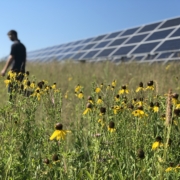 NCAT
NCAT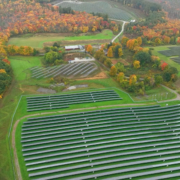

 Courtesy Montana Department of Commerce
Courtesy Montana Department of Commerce
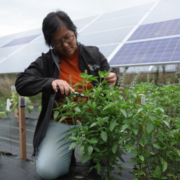
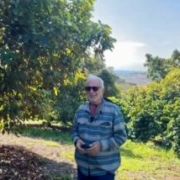
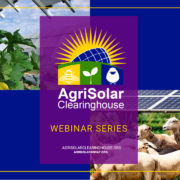

 USDA Photo by Lance Cheung.
USDA Photo by Lance Cheung. 